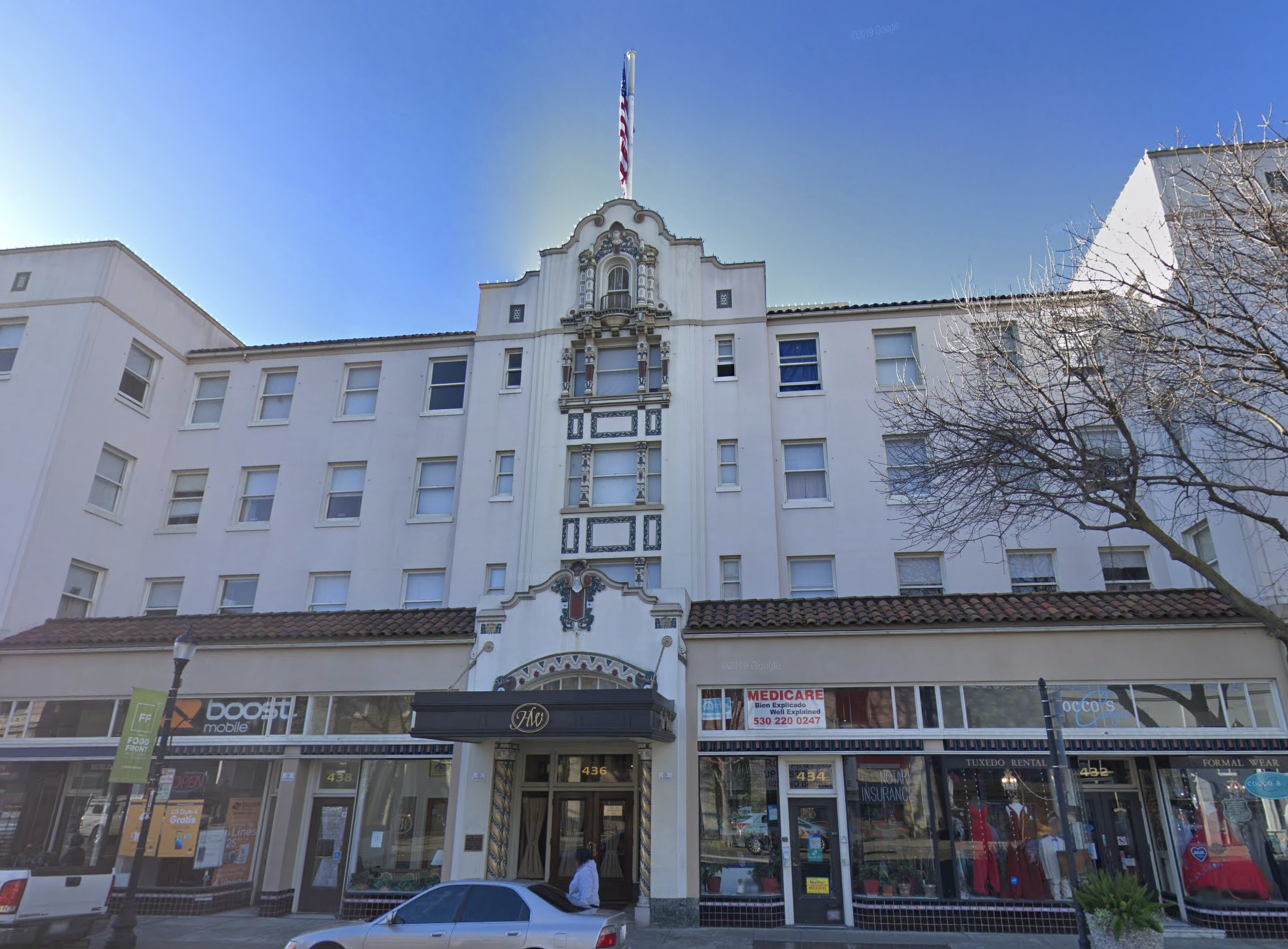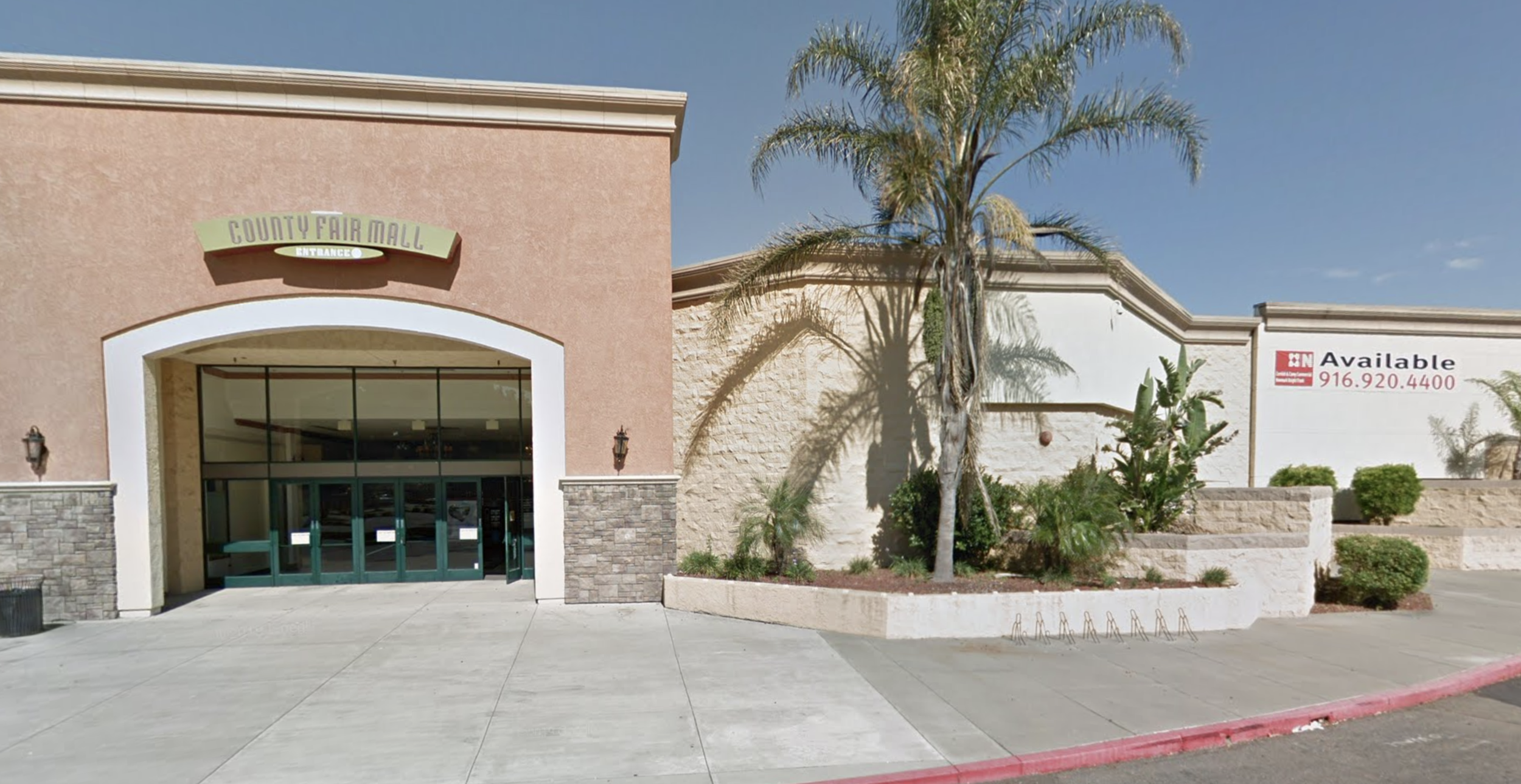The Mall vs. Main Street: Where Are They Now?
Image via Wikimedia Commons.
Woodland is a working-class city of about 55,000, a half-hour northwest of Sacramento. (Its main high school, Woodland High, is the working-class rival to my alma mater, Davis High.) When I was in high school, Woodland had two major shopping districts, Main Street and the County Fair Mall. Their fates couldn't be more different today.
Main Street makes up the city's traditional core. Like a lot of other downtowns, it's been neglected over the decades, but it has good bones. At 2nd and Main, there's still an active 19th-century opera house. Around the corner at First and Court Streets, there's a lovely Carnegie Library. Down the street from the library, at First Street and Dead Cat Alley, there's a well-executed Spanish Revival city hall.
More than anything, Woodland's Main Street is messy. No architect would have planned a town this way. There's a mishmash of buildings in differing styles and heights, built during differing eras of the city's development, and each individual building is subject to the quirks of its owners. Compared to, say, a shopping mall, with a single owner, it's disorderly. But this disorder is a strength, because it means that each individual landowner and businessman is literally invested in the community's success or failure. (This is not the case for, say, Target Corp. or Westfield Malls.) As such, Main Street is built to last.
Let me illustrate this using the old Hotel Woodland as an example.
The Hotel Woodland was built in 1920 as a town showcase, to demonstrate to visitors and residents that this sleepy Yolo County town of 4,100 was a serious place capable of supporting a proper luxury hotel. A century later, the Hotel Woodland is still there at the corner of College and Main. The hotel was in decline in the 1980s, and so it was converted into apartments, with shops and a banquet hall on the ground floor. (It's a pretty cool space for a wedding.)
Its ground-floor tenants aren't too fancy these days. On Google Street View, you see a cellphone store, a building supply company, an insurance agency, a clothes shop, a financial advisor, and the offices of the California Indian Basket Weavers Association. But even though downtown has declined, the building is occupied. It's still commercially viable. A hundred years later, the Hotel Woodland is still there, still producing tax revenue for the city. The Hotel Woodland is there for the long haul.
Now, let's go a mile and a quarter to the southeast, to the County Fair Mall, at the intersection of County Road 24 and East Street. The County Fair Mall was built in the 1980s during the mall boom.
At its height, when I was in high school, it was the place to go shopping in Yolo County. It had four department stores anchoring it: Mervyn's, Gottschalks, Target, and JCPenney.
Today, the County Fair Mall sits derelict. The Target moved a couple miles down the road to a newer, flashier store next to the freeway. Mervyn's and Gottschalks went bankrupt. And today the only things left in the mall are a supermarket, the half-empty JCPenney, and a sketchy Burlington Coat Factory that still uses some of the leftover décor from the old Target. The top Yelp review of the mall, written in 2012, says:
Filmmakers: looking for a set to shoot your zombie flick? The deserted and eerie County Fair Mall is the perfect venue, and I bet you can rent it for a song. (Sorry, I wanted to open this review with a positive and that's the only thing that sprang to mind.)
Once Target and Mervyn's and Gottschalks disappeared, the whole system collapsed in on itself. No one was interested in driving to the County Fair Mall just to buy an Orange Julius. The County Fair Mall was fragile, and totally dependent on the whims of a few mega-corporations and the mall's absentee owner, who lives 400 miles away in Southern California.
With the benefit of hindsight, it's not really clear if the County Fair Mall brought any lasting benefits to the city of Woodland. The mall's smaller commercial spaces are un-rentable for lack of pedestrian traffic, and the larger spaces are un-rentable because only a large corporate tenant could afford to rent it out. For Target, it was simply cheaper to abandon the old mall and to build a shiny new one a couple miles away. The local consensus is that the mall will have to be demolished at some point. It's only a question of when.
The City of Woodland's plan for the County Fair Mall basically admits this failure. The City wants to tear down everything except for the JCPenney and the supermarket, lay a street grid through the site, and build a bunch of three-story buildings facing the streets, with commercial space on the first floor and apartments above.
If this sounds familiar, it should be. Because that's what Woodland decided to build on Main Street more than 100 years ago.
Cover image of downtown Woodland via Wikipedia.
About the Author
Jake Berman is an artist working on a project to map the lost subway and streetcar systems of North America. He lives in New York. Jake can be found on Twitter at @lostsubways, or on the Internet at LostSubways.com.







When people first started building malls, they had no way of knowing that dramatic shifts in technology and consumer patterns would destroy their business models. What they should've known, though, was that betting all their funding and economic stability on a single project was a bad idea. Let’s not repeat their mistakes.